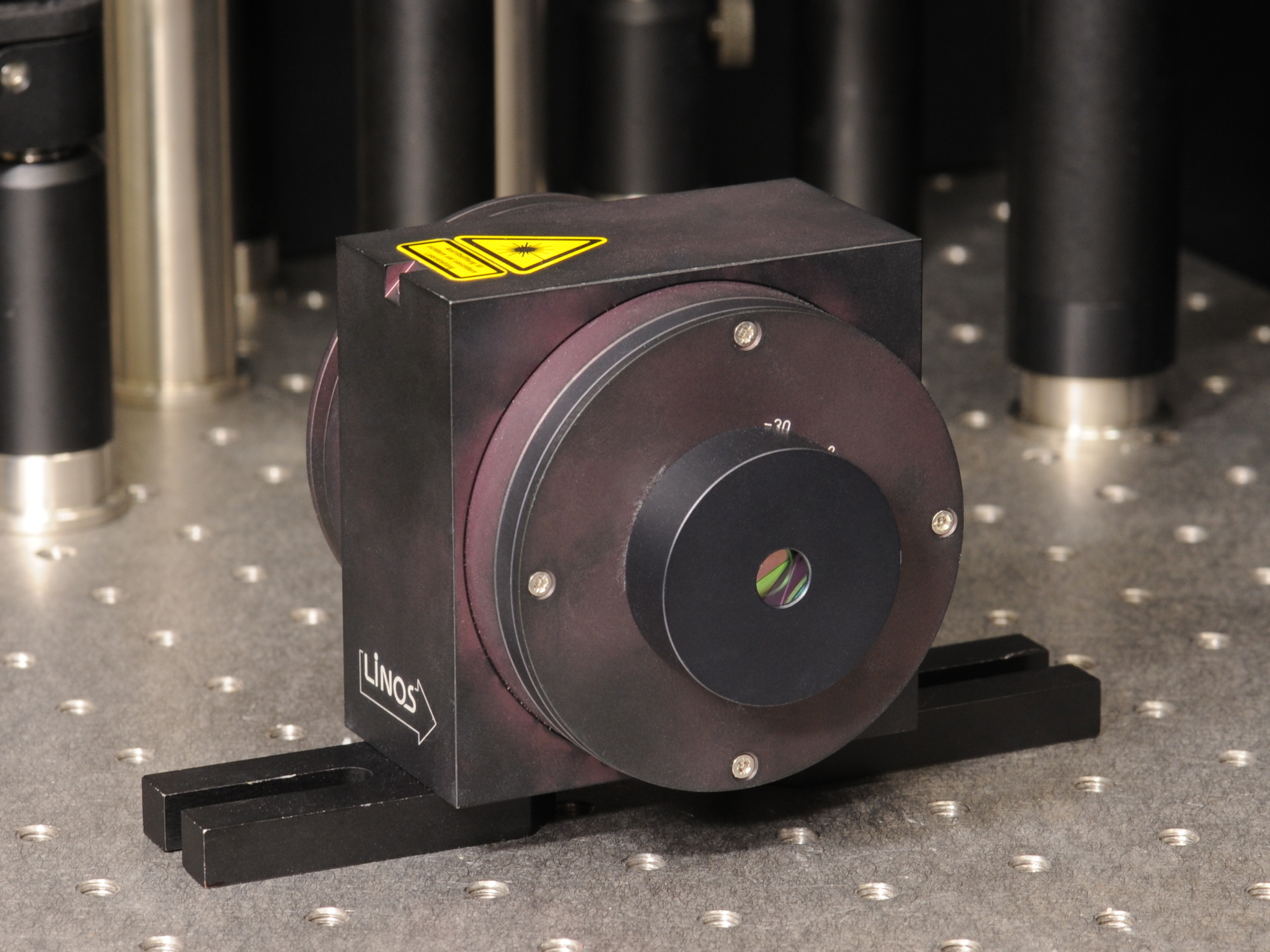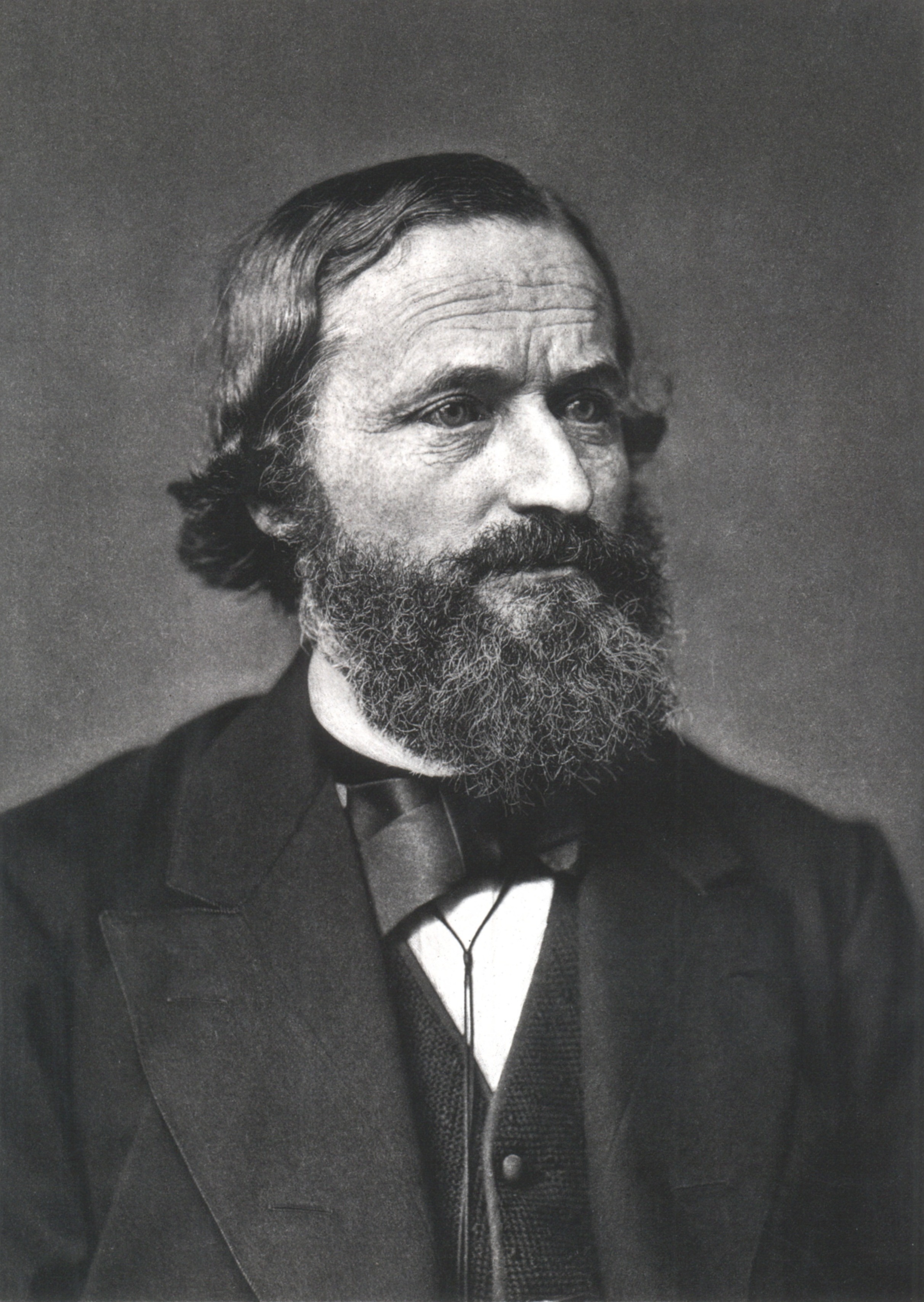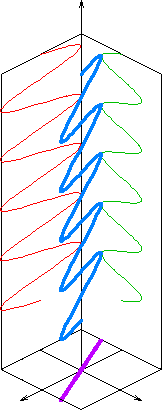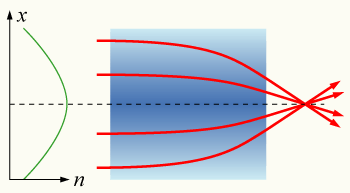|
Optical Isolator
An optical isolator, or optical diode, is an optical component which allows the transmission of light in only one direction. It is typically used to prevent unwanted feedback into an optical oscillator, such as a laser cavity. The operation of ome ofthe devices depends on the Faraday effect (which in turn is produced by magneto-optic effect), which is used in the main component, the Faraday rotator. Theory The main component of the optical isolator is the Faraday rotator. The magnetic field, B, applied to the Faraday rotator causes a rotation in the polarization of the light due to the Faraday effect. The angle of rotation, \beta, is given by, :\beta=\nu B d\,, where, \nu is the Verdet constant of the material (amorphous or crystalline solid, or liquid, or crystalline liquid, or vaprous, or gaseous) of which the rotator is made, and d is the length of the rotator. This is shown in Figure 2. Specifically for an optical isolator, the values are chosen to give a rotation of 45Â ... [...More Info...] [...Related Items...] OR: [Wikipedia] [Google] [Baidu] |
Absorption (optics)
In physics, absorption of electromagnetic radiation is how matter (typically electrons bound in atoms) takes up a photon's energy — and so transforms electromagnetic energy into internal energy of the absorber (for example, thermal energy). A notable effect is attenuation, or the gradual reduction of the intensity of light waves as they propagate through a medium. Although the absorption of waves does not usually depend on their intensity (linear absorption), in certain conditions (optics) the medium's transparency changes by a factor that varies as a function of wave intensity, and saturable absorption (or nonlinear absorption) occurs. Quantifying absorption Many approaches can potentially quantify radiation absorption, with key examples following. * The absorption coefficient along with some closely related derived quantities * The attenuation coefficient (NB used infrequently with meaning synonymous with "absorption coefficient") * The Molar attenuation coefficient (al ... [...More Info...] [...Related Items...] OR: [Wikipedia] [Google] [Baidu] |
Second Law Of Thermodynamics
The second law of thermodynamics is a physical law based on universal experience concerning heat and Energy transformation, energy interconversions. One simple statement of the law is that heat always moves from hotter objects to colder objects (or "downhill"), unless energy in some form is supplied to reverse the direction of heat flow. Another definition is: "Not all heat energy can be converted into Work (thermodynamics), work in a cyclic process."Young, H. D; Freedman, R. A. (2004). ''University Physics'', 11th edition. Pearson. p. 764. The second law of thermodynamics in other versions establishes the concept of entropy as a physical property of a thermodynamic system. It can be used to predict whether processes are forbidden despite obeying the requirement of conservation of energy as expressed in the first law of thermodynamics and provides necessary criteria for spontaneous processes. The second law may be formulated by the observation that the entropy of isolated systems ... [...More Info...] [...Related Items...] OR: [Wikipedia] [Google] [Baidu] |
Kirchhoff's Law Of Thermal Radiation
In heat transfer, Kirchhoff's law of thermal radiation refers to wavelength-specific radiative emission and absorption by a material body in thermodynamic equilibrium, including radiative exchange equilibrium. It is a special case of Onsager reciprocal relations as a consequence of the time reversibility of microscopic dynamics, also known as microscopic reversibility. A body at temperature radiates electromagnetic energy. A perfect black body in thermodynamic equilibrium absorbs all light that strikes it, and radiates energy according to a unique law of radiative emissive power for temperature (Stefan–Boltzmann law), universal for all perfect black bodies. Kirchhoff's law states that: Here, the dimensionless coefficient of absorption (or the absorptivity) is the fraction of incident light (power) that is absorbed by the body when it is radiating and absorbing in thermodynamic equilibrium. In slightly different terms, the emissive power of an arbitrary opaque body ... [...More Info...] [...Related Items...] OR: [Wikipedia] [Google] [Baidu] |
Linear Polarization
In electrodynamics, linear polarization or plane polarization of electromagnetic radiation is a confinement of the electric field vector or magnetic field vector to a given plane along the direction of propagation. The term ''linear polarization'' (French: ''polarisation rectiligne'') was coined by Augustin-Jean Fresnel in 1822.A. Fresnel, "Mémoire sur la double réfraction que les rayons lumineux éprouvent en traversant les aiguilles de cristal de roche suivant les directions parallèles à l'axe", read 9 December 1822; printed in H. de Senarmont, E. Verdet, and L. Fresnel (eds.), ''Oeuvres complètes d'Augustin Fresnel'', vol. 1 (1866), pp.731–51; translated as "Memoir on the double refraction that light rays undergo in traversing the needles of quartz in the directions parallel to the axis", , 2021 (open access); §9. See '' polarization'' and ''plane of polarization'' for more information. The orientation of a linearly polarized electromagn ... [...More Info...] [...Related Items...] OR: [Wikipedia] [Google] [Baidu] |
Wave Plate
A waveplate or retarder is an optics, optical device that alters the Polarization (waves), polarization state of a light wave travelling through it. Two common types of waveplates are the ''half-wave plate'', which shifts the polarization direction of linear polarization, linearly polarized light, and the ''quarter-wave plate'', which converts linearly polarized light into circular polarization, circularly polarized light and vice versa. A quarter-wave plate can be used to produce elliptical polarization as well. Waveplates are constructed out of a birefringence, birefringent material (such as quartz or mica, or even plastic), for which the index of refraction is different for light linearly polarized along one or the other of two certain perpendicular crystal axes. The behavior of a waveplate (that is, whether it is a half-wave plate, a quarter-wave plate, etc.) depends on the thickness of the crystal, the wavelength of light, and the variation of the index of refraction. By appro ... [...More Info...] [...Related Items...] OR: [Wikipedia] [Google] [Baidu] |
Decibel
The decibel (symbol: dB) is a relative unit of measurement equal to one tenth of a bel (B). It expresses the ratio of two values of a power or root-power quantity on a logarithmic scale. Two signals whose levels differ by one decibel have a power ratio of 101/10 (approximately ) or root-power ratio of 10 (approximately ). The unit expresses a relative change or an absolute value. In the latter case, the numeric value expresses the ratio of a value to a fixed reference value; when used in this way, the unit symbol is often suffixed with letter codes that indicate the reference value. For example, for the reference value of 1 volt, a common suffix is " V" (e.g., "20 dBV"). Two principal types of scaling of the decibel are in common use. When expressing a power ratio, it is defined as ten times the logarithm in base 10. That is, a change in ''power'' by a factor of 10 corresponds to a 10 dB change in level. When expressing root-power quantities, a change in ''ampl ... [...More Info...] [...Related Items...] OR: [Wikipedia] [Google] [Baidu] |
Yttrium Iron Garnet
Yttrium iron garnet (YIG) is a kind of synthetic garnet, with chemical composition , or Y3Fe5O12. It is a ferrimagnetic material with a Curie temperature of 560 K. YIG may also be known as yttrium ferrite garnet, or as iron yttrium oxide or yttrium iron oxide, the latter two names usually associated with powdered forms. In YIG, the five iron(III) ions occupy two octahedral and three tetrahedral sites, with the yttrium(III) ions coordinated by eight oxygen ions in an irregular cube. The iron ions in the two coordination sites exhibit different spins, resulting in magnetic behavior. By substituting specific sites with rare-earth elements, for example, interesting magnetic properties can be obtained. YIG has a high Verdet constant which results in the Faraday effect, high Q factor in microwave frequencies, low absorption of infrared wavelengths down to 1200 nm, and very small linewidth in electron spin resonance. These properties make it useful for MOI ( magneto optical i ... [...More Info...] [...Related Items...] OR: [Wikipedia] [Google] [Baidu] |
Terbium Gallium Garnet
Terbium gallium garnet (TGG) is a kind of synthetic garnet, with the chemical composition . This is a Faraday rotator material with excellent transparency properties and is very resistant to laser damage. TGG can be used in optical isolators for laser systems, in optical circulators for fiber optic systems, in optical modulators, and in current and magnetic field sensors. TGG has a high Verdet constant which results in the Faraday effect. The Verdet constant increases substantially as the mineral approaches cryogenic temperatures. The highest Verdet constants are found in terbium doped dense flint glasses or in crystals of TGG. The Faraday effect is chromatic (i.e. it depends on wavelength) and therefore the Verdet constant is quite a strong function of wavelength. At 632 nm, the Verdet constant for TGG is reported to be , whereas at 1064 nm it falls to . This behavior means that the devices manufactured with a certain degree of rotation at one wavelength, will produce m ... [...More Info...] [...Related Items...] OR: [Wikipedia] [Google] [Baidu] |
Terbium Doped Borosilicate
Terbium is a chemical element with the symbol Tb and atomic number 65. It is a silvery-white, rare earth metal that is malleable, and ductile. The ninth member of the lanthanide series, terbium is a fairly electropositive metal that reacts with water, evolving hydrogen gas. Terbium is never found in nature as a free element, but it is contained in many minerals, including cerite, gadolinite, monazite, xenotime and euxenite. Swedish chemist Carl Gustaf Mosander discovered terbium as a chemical element in 1843. He detected it as an impurity in yttrium oxide, . Yttrium and terbium, as well as erbium and ytterbium, are named after the village of Ytterby in Sweden. Terbium was not isolated in pure form until the advent of ion exchange techniques. Terbium is used to dope calcium fluoride, calcium tungstate and strontium molybdate in solid-state devices, and as a crystal stabilizer of fuel cells that operate at elevated temperatures. As a component of Terfenol-D (an alloy that ex ... [...More Info...] [...Related Items...] OR: [Wikipedia] [Google] [Baidu] |
Self-focusing
Self-focusing is a nonlinear optics, non-linear optical process induced by the change in refractive index of materials exposed to intense electromagnetic radiation. A medium whose refractive index increases with the electric field intensity acts as a focusing lens for an electromagnetic wave characterized by an initial transverse intensity gradient, as in a laser beam. The peak intensity of the self-focused region keeps increasing as the wave travels through the medium, until defocusing effects or medium damage interrupt this process. Self-focusing of light was discovered by Gurgen Askaryan. Self-focusing is often observed when radiation generated by femtosecond lasers propagates through many solids, liquids and gases. Depending on the type of material and on the intensity of the radiation, several mechanisms produce variations in the refractive index which result in self-focusing: the main cases are Kerr-induced self-focusing and plasma self-focusing. Kerr-induced self-focusing ... [...More Info...] [...Related Items...] OR: [Wikipedia] [Google] [Baidu] |
Laser Damage Threshold
The laser damage threshold (LDT) or laser induced damage threshold (LIDT) is the limit at which an optic or material will be damaged by a laser given the fluence (energy per area), intensity (power per area), and wavelength. LDT values are relevant to both transmissive and reflective optical elements and in applications where the laser induced modification or destruction of a material is the intended outcome. Mechanisms Thermal For long pulses or continuous wave lasers the primary damage mechanism tends to be thermal. Since both transmitting and reflecting optics both have non-zero absorption, the laser can deposit thermal energy into the optic. At a certain point, there can be sufficient localized heating to either affect the material properties or induce thermal shock. Dielectric breakdown Dielectric breakdown occurs in insulating materials whenever the electric field is sufficient to induce electrical conductivity. Although this concept is more common in the context of D ... [...More Info...] [...Related Items...] OR: [Wikipedia] [Google] [Baidu] |





.jpg)

